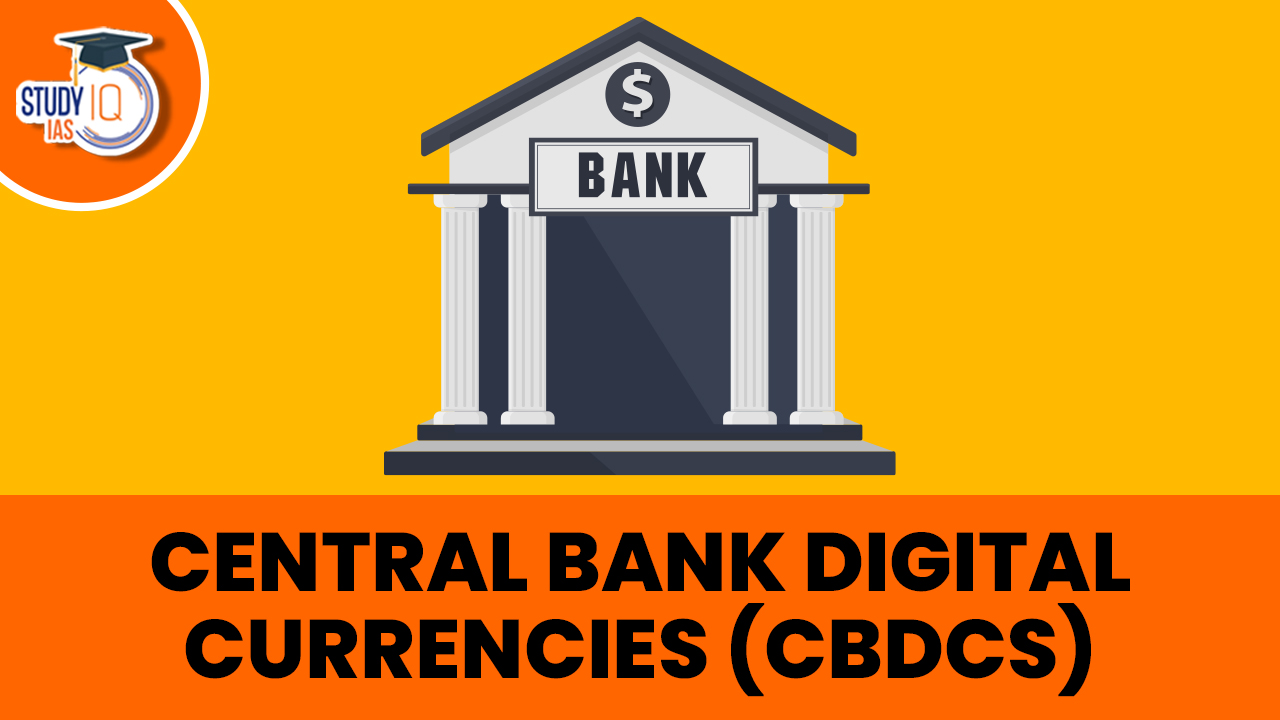Table of Contents
Context: US President Donald Trump has issued an executive order banning the establishment of a central bank digital currency.
About Central Bank Digital Currency (CBDC)
- It is a digital form of national currency issued and regulated by a country’s central bank, representing a digital version of physical cash and legal tender.
- It can also be programmed for certain selected users or within a specific region of a country.
- RBI has also launched e-rupee, a digital version of currency notes.
- CBDC appears as a liability on the RBI’s balance sheet.
- Finance Act 2022 amended the RBI Act, enabling it to introduce Central Bank Digital Currency.
Types of CBDC
- Retail CBDC: CBDC that can be used for people for day-to-day transactions.
- Wholesale CBDC: CBDC can be used only by financial institutions such as Banks, NBFCs etc.
| Wholesale CBDC (CBDC-W) | Retail CBDCs (CBDC-R) |
|
|
Benefits of CBDC
- Freely Convertible.
- Programmable
- Fungible Legal tender.
- Enables direct Bilateral Currency Exchanges.
Global Scenario of CBDCs
- Globally, more than 90 per cent of central banks are exploring the implementation of CBDC.
- It has been already launched in countries like the Bahamas, Nigeria and the East Caribbean Currency Union.
- Pilot projects/testing of CDBC is being undertaken in countries such as China, Sweden, Ukraine and Jamaica.
- China has also commenced a pilot of the e-yuan (e-CNY).
- Further, France, Switzerland and Singapore have launched a joint trial of their experimental CBDC.
RBI and CBDCs
- The Reserve Bank of India (RBI) has released a concept note outlining its plans for a Central Bank Digital Currency (CBDC), also known as the Digital Rupee or e-Rupee.
- This digital form of the Indian rupee will be interchangeable one-to-one with the physical currency and will have the same value and sovereignty as the fiat currency.
- The RBI announced the pilot program for the wholesale Digital Rupee segment on November 1, 2022, and the first pilot for CBDC-Retail was announced on December 1, 2022.
How Does the Digital Rupee Work?
- The RBI will create tokens, and issue them to financial entities called Token Service Providers (TSPs), which are the banks selected for the Digital Rupee Pilot Program.
- The TSP will then distribute the tokens to interested parties/customers.
- The digital Rupee tokens will work in the same way as bank notes/coins, and one can use them in lieu of cash.
Motivations for issuing a CBDC in India
- Reducing Cash Usage and Expenses: CBDCs can redirect preference for cash towards digital payments, minimizing the use of physical cash, and reducing costs associated with cash management.
- Data compiled from RBI’s annual reports shows the cost of printing currency notes in 2021-22 at ₹4,984.8 crore.
- Apart from this, there are environmental, social, and governance (ESG) costs associated with currency management.
- Promoting Financial Inclusion: CBDCs can be accessed without needing a bank account, enabling more individuals, especially those in remote areas without banking access, to participate in digital transactions and access credit facilities.
- Facilitating Cross-Border Transactions: Implementing CBDC technology can benefit cross-border transactions, particularly given India’s status as a significant recipient of cross-border remittances. Collaboration with other central banks is being explored.
- Countering Private Virtual Currencies: CBDCs provide a risk-free digital currency option, countering the risks associated with private cryptocurrencies like money laundering, terrorism financing, and parallel economies. They also restore trust in the central bank currency.
Advantages and Disadvantages of CBDCs
| Advantages of CBDCs | Disadvantages of CBDCs |
|
|
Way Forward
- Robust Regulatory Framework: Before implementing CBDC technology, it’s imperative to develop a strong regulatory framework.
- This framework should be flexible enough to adapt to changing circumstances and incorporate ongoing learning in CBDC design.
- Prioritize Cybersecurity: Maintaining high standards of cybersecurity is paramount in the implementation of CBDC.
- Simultaneously, efforts to enhance financial literacy should be pursued to ensure the safe and informed use of digital currency.
- User Privacy and Data Protection: It is essential to consider and implement measures that respect user privacy and protect data within the CBDC system, emphasizing the importance of data security and privacy in the digital currency ecosystem.
- Protect Financial Markets: Address the implications of CBDC and other emerging digital assets to safeguard the interests of consumers, investors, and businesses within the financial markets.
| UPSC PYQ |
| Q. With reference to Central Bank digital currencies, consider the following statements: (2023) (1) It is possible to make payments in a digital currency without using the US dollar or SWIFT system. (2) A digital currency can be distributed with a condition programmed into it such as a time- frame for spending it. Which of the statements given above is/are correct? (a) 1 only (b) 2 only (c) Both 1 and 2 (d) Neither 1 nor 2Answer: C |


 India's Oil Import Dependency Reaches Re...
India's Oil Import Dependency Reaches Re...
 Steel Production in India, Major Players...
Steel Production in India, Major Players...
 RBI issued New Guidelines regarding Liqu...
RBI issued New Guidelines regarding Liqu...





















